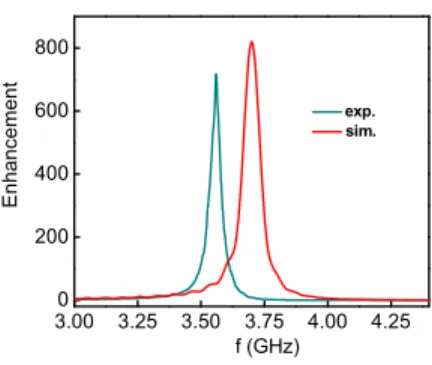The Magical World of Metamaterials
Ekmel Ozbay, Bilkent University, Bilkent, 06800 Ankara, Turkey Tel. +90-312-290-1966, Fax.+90-312-290-1015, ozbay@bilkent.edu.tr
In recent years, there has been a burgeoning interest in rapidly growing field of metamaterials due to their unprecedented properties unattainable from ordinary materials. Veselago pointed out that a material exhibiting negative values of dielectric permittivity (ε) and magnetic permeability (μ) would have a negative refractive index [1]. Generally speaking, the dielectric permittivity (ε) and the magnetic permeability (μ) are both positive for natural materials. In fact, it is possible to obtain negative values for ε and μ by utilizing proper designs of metamaterials. Left-handed electromagnetism and negative refraction are achievable with artificially structured metamaterials exhibiting negative values of permittivity and permeability simultaneously at a certain frequency region. The first steps to realize these novel type of materials were taken by Smith et al., where they were able to observe a left-handed propagation band at frequencies where both dielectric permittivity and magnetic permeability of the composite metamaterial are negative [2]. Soon after, left-handed metamaterials with an effective negative index of refraction are successfully demonstrated by various groups [3].
A perfect lens is one of the most important applications of materials with a negative refractive index. The term, perfect lens, was coined by J. B. Pendry owing to the ability of such lenses to reconstruct a perfect image by recovering the evanescent components of EM waves [4]. Ordinary materials with a positive refractive index always require curved surfaces to focus EM waves. Positive-index lenses suffer from the diffraction limit that is dictated by wave optics and can only focus objects with sizes on the order of a half-wavelength. The finer details of the image are carried by high-k components, the so called evanescent waves and quickly decay before reaching the image plane. Therefore, the contribution of evanescent components to the resolution of the image is absent in conventional lenses. Negative index materials can restore the amplitude of evanescent waves and therefore enable subwavelength focusing [5].
The left-handed metamaterials under investigation are typically composed of periodic arrangement of split-ring resonators (SRRs) and thin wire grids. Periodic thin wire media is responsible for the negative effective permittivity, whereas periodic SRR structure provides negative effective permeability.. Although transmission measurements provide some information about the negative phase velocity properties of metamaterial, additional measurements must be done in order to assure that the metamaterial has negative refraction characteristics. For this purpose, we performed experiments to verify the refractive index of the 2D LHM under investigation is indeed negative. Prism-shaped structures can be used to find the sign and the value of the refractive index. We constructed a prism-shaped LHM. Negative refraction angle could only be possible if the measured sample has a negative refractive index. By using Snell’s law, the refractive index is calculated as neff = -1.91 ± 0.05 when the maximum transmission is observed [5]. In the subwavelength imaging experiments, we used monopole antennae to imitate the point source. We used two point sources separated by distances smaller than a wavelength to obtain subwavelength resolution. The imaging experiments are performed for two different separation distances between the sources. The measured power distribution of sources, separated by λ/8, is plotted in Fig. 1. As seen in the figure, the peaks of two sources are resolved. We then increased the separation of the sources to a distance of λ/5 and the peaks are resolved better. When the sources are λ/3 apart (green line), we have been able to resolve two peaks entirely [6].
We obtained enhanced transmission of electromagnetic waves through a single subwavelength aperture by making use of the resonance behavior of a split ring resonator (SRR) at microwave frequencies. By placing a single SRR at the near-field of the aperture, strongly localized electromagnetic fields were effectively coupled to the aperture with a radius that is twenty times smaller than the resonance wavelength (r/λ = 0.05). We obtained 740-fold transmission (Figure 2) enhancement by exciting the electric resonance of SRR. A different coupling mechanism, through the magnetic resonance of SRR, was also verified to lead to enhanced transmission. Good agreement was obtained between the measurements and numerical simulations [7].
Other examples of peculiar electromagnetic behavior related to metamaterials will be given during the presentation [8].
1 PLE2 (Plenary)
8.50 - 9.30
3.000 3.25 3.50 3.75 4.00 4.25 200 400 600 800 exp. sim. f (GHz) E nhan cement
Fig. 1. The measured power distributions for two point
sources separated with distances of λ/8, λ/5 and λ/3. Fig. 2. Measured and simulated enhancement of transmitted EM wave from the subwavelength aperture covered with metamaterials. -6 -5 -4 -3 -2 -1 0 1 2 3 4 5 6 0.0 0.2 0.4 0.6 0.8 1.0 λ /8 λ/5 λ/3 Inte n sity (arb . u.) Lateral Position (cm) References
[1] V. G. Veselago, “The electrodynamics of substances with simultaneously negative values of permittivity and permeability,” Sov. Phys. Usp. 10, 509 (1968).
[2] D. R. Smith, W. J. Padilla, D. C. Vier, S. C. Nemat-Nasser, and S. Schultz, “Composite medium with simultaneously negative permeability and permittivity,” Phys. Rev. Lett. 84, 4184-4187 (2000).
[3] R. A. Shelby, D. R. Smith, and S. Schultz, “Experimental verification of a negative index of refraction,” Science 292, 77-79 (2001).
[4] J. B. Pendry, “Negative refraction makes a perfect lens,” Phys. Rev. Lett. 85, 3966-3969 (2000).
[5] K. Aydin, K. Guven, C. M. Soukoulis, and E. Ozbay, “Observation of negative refraction and negative phase velocity in left-handed metamaterials,” Appl. Phys. Lett. 86, 124102 (2005).
[6] K. Aydin, I. Bulu, and E. Ozbay, “Subwavelength resolution with a negative-index metamaterial superlens” Appl.
Phys. Lett. 90, 254102 (2007).
[7] Koray Aydin, A. Ozgur Cakmak, Levent Sahin, Zhaofeng Li, Filiberto Bilotti, Lucio Vegni, and Ekmel Ozbay, “Split-Ring-Resonator-Coupled Enhanced Transmission through a Single Subwavelength Aperture,” Physical Review Letters 102, 013904 (2009).
[8] Ekmel Ozbay, “Plasmonics: Merging Photonics and Electronics at Nanoscale Dimensions,” Review Article, Science, vol. 311, 189 (2006).
